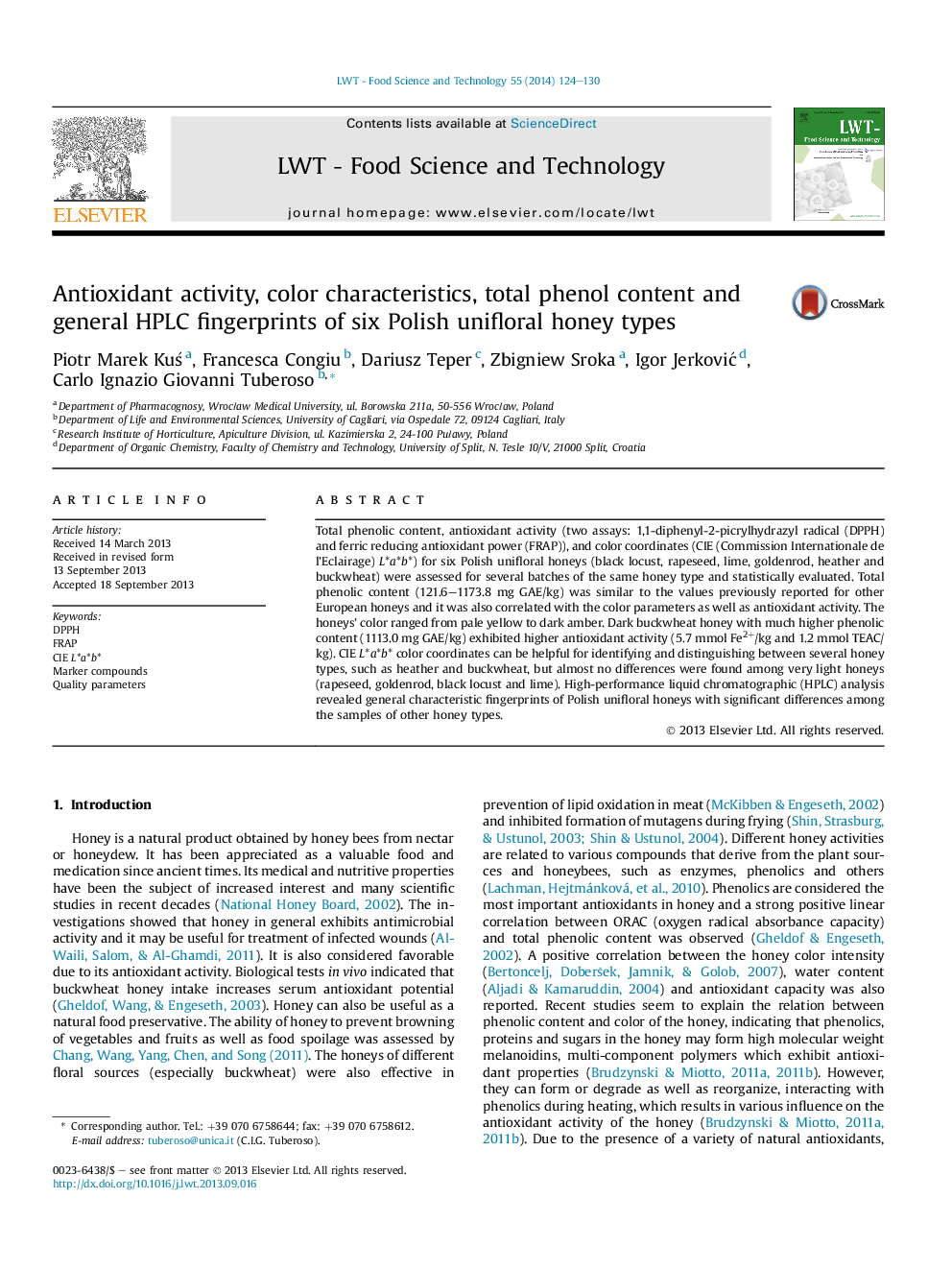| Article ID | Journal | Published Year | Pages | File Type |
|---|---|---|---|---|
| 6403881 | LWT - Food Science and Technology | 2014 | 7 Pages |
â¢Antioxidant capacity & color (first report) were determined for Polish honeys.â¢Several samples of the same type were analyzed and statistically evaluated.â¢The color coordinates can be helpful for distinguishing types of Polish honeys.â¢Dark buckwheat honey was rich in phenols and the most active as an antioxidant.â¢General HPLC fingerprints were determined for all samples.
Total phenolic content, antioxidant activity (two assays: 1,1-diphenyl-2-picrylhydrazyl radical (DPPH) and ferric reducing antioxidant power (FRAP)), and color coordinates (CIE (Commission Internationale de l'Eclairage) L*a*b*) for six Polish unifloral honeys (black locust, rapeseed, lime, goldenrod, heather and buckwheat) were assessed for several batches of the same honey type and statistically evaluated. Total phenolic content (121.6-1173.8Â mg GAE/kg) was similar to the values previously reported for other European honeys and it was also correlated with the color parameters as well as antioxidant activity. The honeys' color ranged from pale yellow to dark amber. Dark buckwheat honey with much higher phenolic content (1113.0Â mg GAE/kg) exhibited higher antioxidant activity (5.7Â mmol Fe2+/kg and 1.2Â mmol TEAC/kg). CIE L*a*b* color coordinates can be helpful for identifying and distinguishing between several honey types, such as heather and buckwheat, but almost no differences were found among very light honeys (rapeseed, goldenrod, black locust and lime). High-performance liquid chromatographic (HPLC) analysis revealed general characteristic fingerprints of Polish unifloral honeys with significant differences among the samples of other honey types.
